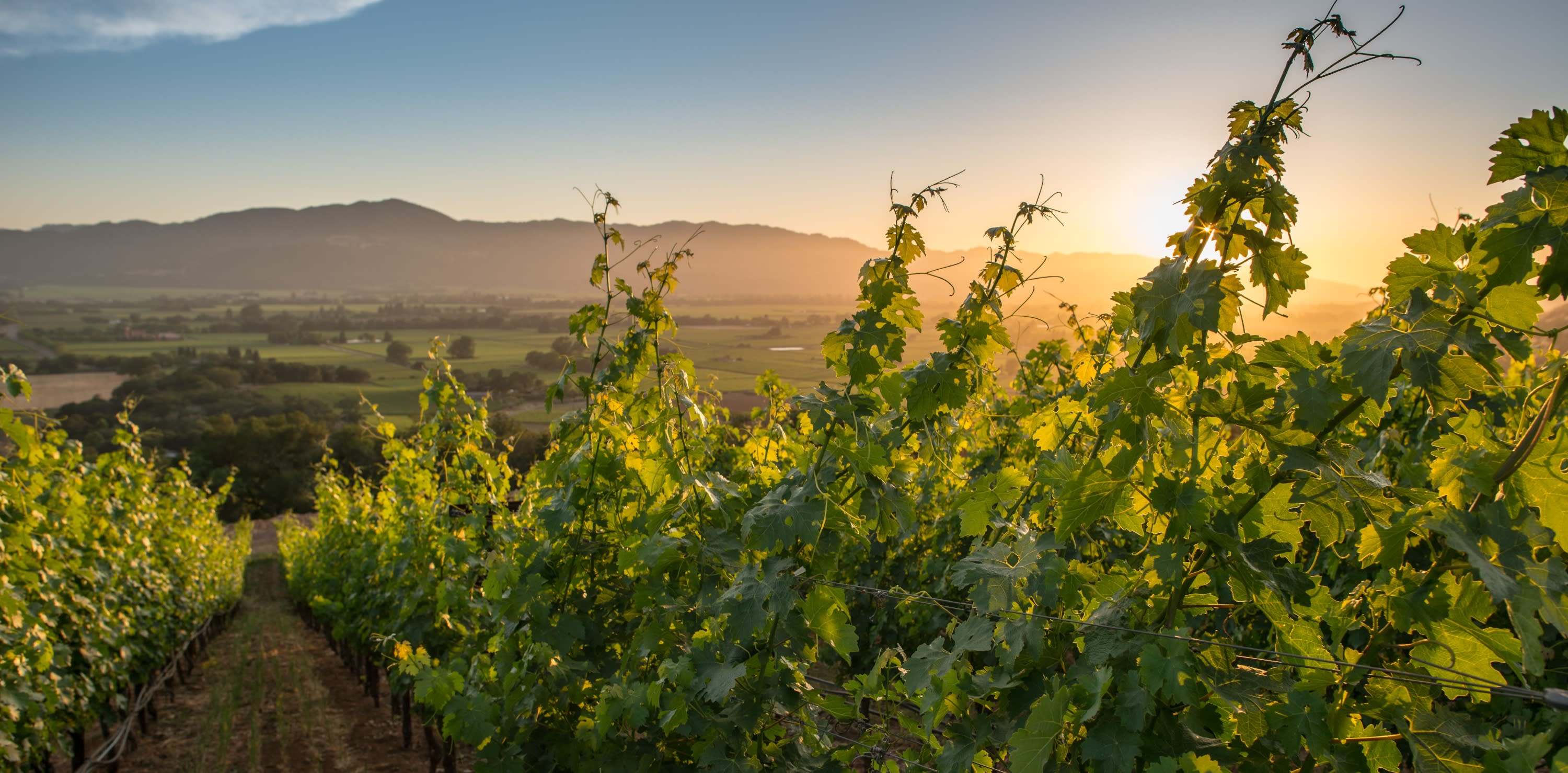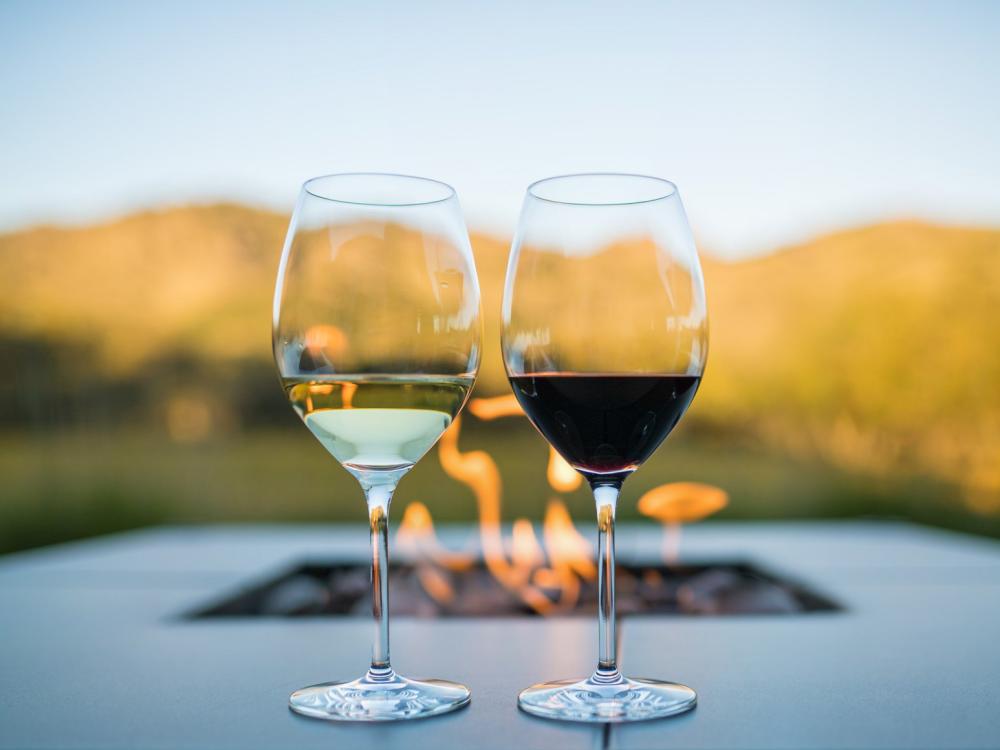You find yourself at a dinner party and the host asks what you prefer to drink, red wine or white wine. In the wide world of wine, while that question is super general, there are certainly some intrinsic basic principles associated with each type. And, while there is no wrong answer, the differences between each – red and white – are definitely big and choosing one versus the other is really all only a small matter of preference.
The Obvious Difference: Color
First and foremost, and also the most obvious difference, is the color. The color of wine, while typically associated with the color of the grape (black grapes or white grapes), is driven by the amount of contact that the grape juice has with the grape skins and seeds.
How is the Production Process Different?
Grape variety aside, production is the factor that next influences the characteristics of all wines. Red wines are typically fermented with the skins and seeds. This process, called maceration, coupled with the duration of contact between juice, skins, and seeds, imparts much of the color and flavor of red wine as well as how the wine feels on the palate. Tannins are the compounds in wine that are imparted by the duration of time the juice stays in contact with skins and seeds and are a contributing factor to how much “structure” and “body” a wine has. Tannins, or the lack thereof, are often mentioned when describing red wine. Unlike red wines, for the production of white wine, the juice is quickly pressed off the skins and seeds and fermentation ensues without any contact with skins and seeds.
How are the Wines Aged Differently?
Once fermentation is complete, red wines are commonly aged in oak barrels while white wines are typically aged in stainless steel tanks. Barrels not only allow for more oxygenation of the wine, which can help to soften tannins and lead to a smoother texture, but also impart unique aroma and taste characteristics on the wine such as notes of cedar, toasty oak, and baking spice. White wines, which are commonly aged in stainless steel tanks, allowing for less oxygenation, often retain more of the fruity or floral characteristics of the grape and preserve the grape’s acidity giving the wine a crisp, fresh quality. Though, that’s not to say that white wines are never aged in oak barrels. This certainly happens, too, and the results often impart notes of toast, vanilla, or nutty characteristics on the wine. Creamy, buttery flavors in a white wine may also be present if additional fermentation takes place.
What are the Common Descriptors of the Wines?
Beyond the general color of the grape and the basic fermentation and production process, grape varieties (and subsequently the wine varietals they comprise), have common characteristics that thread them. These characteristics of wine are commonly described using primary descriptors – words which are derived from a combination of sensory cues including sight, aroma, taste, and feel on the palate. It is said that there are some 10,000 identified wine grape varieties but only a few dozen which have gained widespread renown. And, of that few dozen, there are certainly some commonly recognized varieties.
Flavors & Aromas
|
Red Wine
|
White Wine
|
Body & Finish
|
Red Wine
|
White Wine
|
Common Red Varieties in Napa Valley and Their Typical Tasting Profiles
Cabernet Sauvignon: A full-bodied wine, with dense, plush tannins and pronounced flavors of black currant, cherry, plum, berries, and nuances of minerals, florals, or herbs. Oak aging imparts hints of spice, mocha, cedar, or sweet tobacco. Napa Valley Cabernets have the structure and quality to age! While certainly a matter of preference on when to open your bottle, peak drinking is often 7-10 years after bottling and some can even be enjoyed up to 15 to 20 years later.
Cabernet Franc: A medium-bodied wine with fresh acidity and flavors of raspberry, strawberry, plum, pepper, earth, and spice. Cabernet Franc pairs well with a variety of foods.
Malbec: A full-bodied wine with intense dark fruit flavors, dried herbs, cocoa, and sweet spices. The perfect partner for meat dishes.
Merlot: A medium- to full-bodied wine with red and dark fruit flavors and hints of dried herbs, baking spices, and mocha. A silky smooth mouthfeel makes this wine a crowd-pleaser.
Petit Verdot: Dark and inky in color, this full-bodied wine is high in tannins yet has fresh acidity and offers rich cherry and plum flavors with nuances of florals and herbs. Often a blending grape, but due to popularity with red wine lovers, single-varietal bottlings have become a trend.
Pinot Noir: This light- to medium-bodied wine has bright acidity and complex flavors of tart red fruits, florals, tea, spice, and earthy characteristics. It is a beloved wine that can be enjoyed on its own or with a range of foods, including seafood.
Syrah: Full-bodied and packed with broad tannins, this wine often features intense flavors of dark fruits, herbal notes, or meaty characteristics such as hints of bacon (yes, bacon!) coupled with hints of spice or chocolate undertones and sweet tobacco. Both elegant and powerful in its style, this wine impresses.
Zinfandel: A fruit forward, medium- to full-bodied wine with jammy and bramble fruit flavors, along with hints of peppercorn, spice, and sweet oak flavors. Some “old” vines (often referred to as “gnarly vines”) still remain today from the original plantings here in Napa Valley during the 19th century and these vines produce rich, concentrated renditions of this varietal.
Common White Varieties in Napa Valley and Their Typical Tasting Profiles
Chardonnay: Typically light- to medium-bodied with a range of styles from crisp and citrusy to creamy with tropical fruit flavors, or buttery with apple, vanilla, and lemon curd flavors. A versatile grape that can often surprise, Chardonnays pair well with fish, pasta, chicken, and cheeses.
Pinot Grigio: A light-bodied wine with crisp acidity, floral aromas along with citrus, stone fruit, and melon flavors. This wine makes for the perfect dinner companion to light meals.
Riesling: An aromatic wine with styles ranging from dry to sweet and light- to medium-body. Napa Valley Rieslings are often dry in style with fresh acidity featuring hints of lime, tart apple, stone fruit, white florals, and honeysuckle aromas and flavors. Riesling pairs well with spicy foods such as Thai cuisine.
Sauvignon Blanc: Features pronounced aromas and flavors of citrus, melon, stone fruit, and tropical fruit, this herbaceous wine with hints of freshly cut green grass make it a go-to for white wine lovers. The mouth-watering acidity and light- to medium-body make it wonderful for sipping on a warm Summer day!
Viognier: Known for its perfumed floral aromas and stone and tropical fruit flavors, this fragrant wine has a rounded, smooth character and pairs well with acidic foods.
Now, back to the question from your dinner host…red or white?
With this basic, foundational knowledge you might find yourself better prepared to make that decision based on what you prefer to taste in your glass of wine. Armed with this information, and hopefully with a sense of curiosity, you are certainly ready to explore further! Rest assured, there is no shortage of information about the dozens of wines which are expertly made and offered here in Napa Valley. The only next question, then, is how much time do you have to carry out your exploration? Cheers!
















